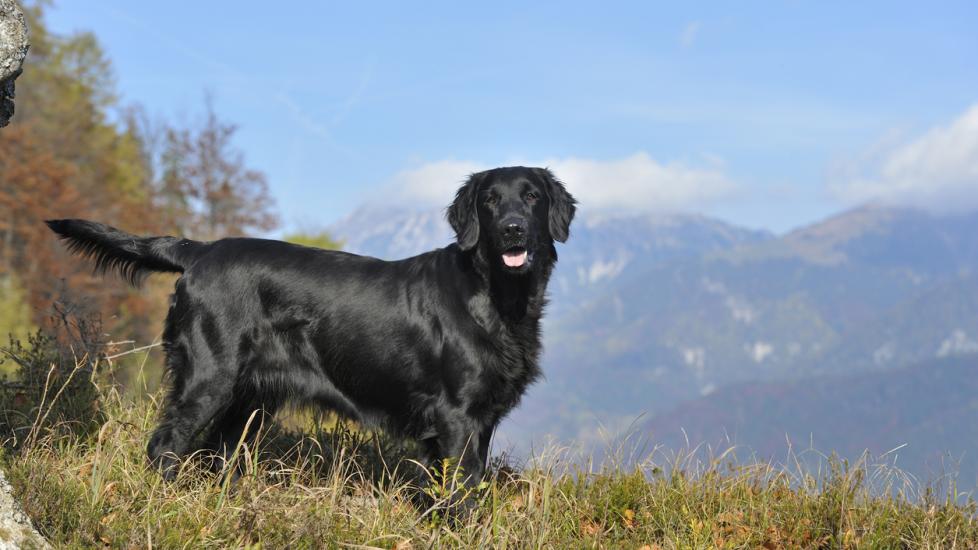Introduction:
The Flat-Coated Retriever is an elegant and energetic gun dog known for its sleek appearance and exceptional agility. Originally bred as a hunting companion, this intelligent breed has also found popularity among families looking for a loyal and active canine friend.
Lifespan: 10 – 12 years
Coat Length: Long, flat, and glossy
Alias(es): The “Greyhound of the Sporting World”
Height (adult): Males: 65–73 cm; Females: 61–68 cm
Place of Origin: United Kingdom
Body Size: Large
Shedding Level: Moderate to High Shedder
Trainability: Eager to Please and Trainable with Patience
Overview:
The Flat-Coated Retriever stands out with its distinctive silky coat that comes in solid black or liver colors. Its most notable feature is its smooth, close-lying hair that contrasts with other retriever breeds. This breed is characterized by its lean build, long legs, and graceful movements.
Temperament:
Known for their friendly nature and outgoing personality, Flat-Coated Retrievers are highly sociable dogs that thrive on human companionship. They are affectionate with family members, including children, and generally get along well with other pets. Their instinct to retrieve makes them excellent swimming partners and they enjoy outdoor activities such as running, hiking, and retrieving games.
Exercise Needs:
This athletic breed requires regular physical activity to stay happy and healthy. Daily walks or runs, as well as opportunities to swim if possible, will help keep your Flat-Coated Retriever fit and mentally stimulated.
Training Requirements:
Flat-Coated Retrievers are eager to please and respond well to positive reinforcement training methods. However, due to their independent streak, early socialization and obedience training are essential to ensure good manners and prevent any unwanted behaviors from developing. Consistency and patience are key when working with these intelligent dogs.
Health Considerations:
While generally robust, Flat-Coated Retrievers may be prone to hip dysplasia, elbow dysplasia, and autoimmune diseases like thyroiditis and Addison’s disease. Regular check-ups with the vet are recommended to maintain optimal health.
Grooming:
Despite their low maintenance coats compared to other retriever breeds, Flat-Coats still require weekly brushing to prevent matting and to keep the natural shine of the coat. Bathing should be done as needed but not too frequently to avoid drying out the skin. Trimming the feet and around the ears can help tidy up the overall look.
Conclusion:
The Flat-Coated Retriever combines beauty, intelligence, and a zest for life into one dynamic package. With proper exercise, training, and grooming, this breed can make a wonderful addition to an active household seeking a devoted four-legged companion.
